Email is an essential part of any business. It is the primary channel for internal communication. It is also used to market to consumers, engage with sales leads, and resolve customer queries. Email can significantly benefit businesses by increasing efficiency and productivity and helping build relationships.
Nowadays, organizations must manage their email communication channels. With the volume of emails being sent daily, employees may quickly feel overwhelmed and struggle to keep track of the tasks associated with each email sent and received.
Email management is necessary to prevent email overload. As the number of email users grows, so does the volume of emails sent, resulting in email overload. Email overload can result in missed emails, emails being responded to late, missed sales opportunities, and more.
Email management simply entails staying in control of how you read and respond to emails, without being drowned in loads of emails.
It’s about organizing your inbox, replying on time, and keeping things from piling up. You delete what you don’t need, sort what you do, and make sure nothing important gets missed. It helps you stay focused and save time.
Email management is essential for any business that receives high volumes of inbound electronic mail. According to Statista, the estimated number of emails sent and received daily in 2025 is 376.4 billion.
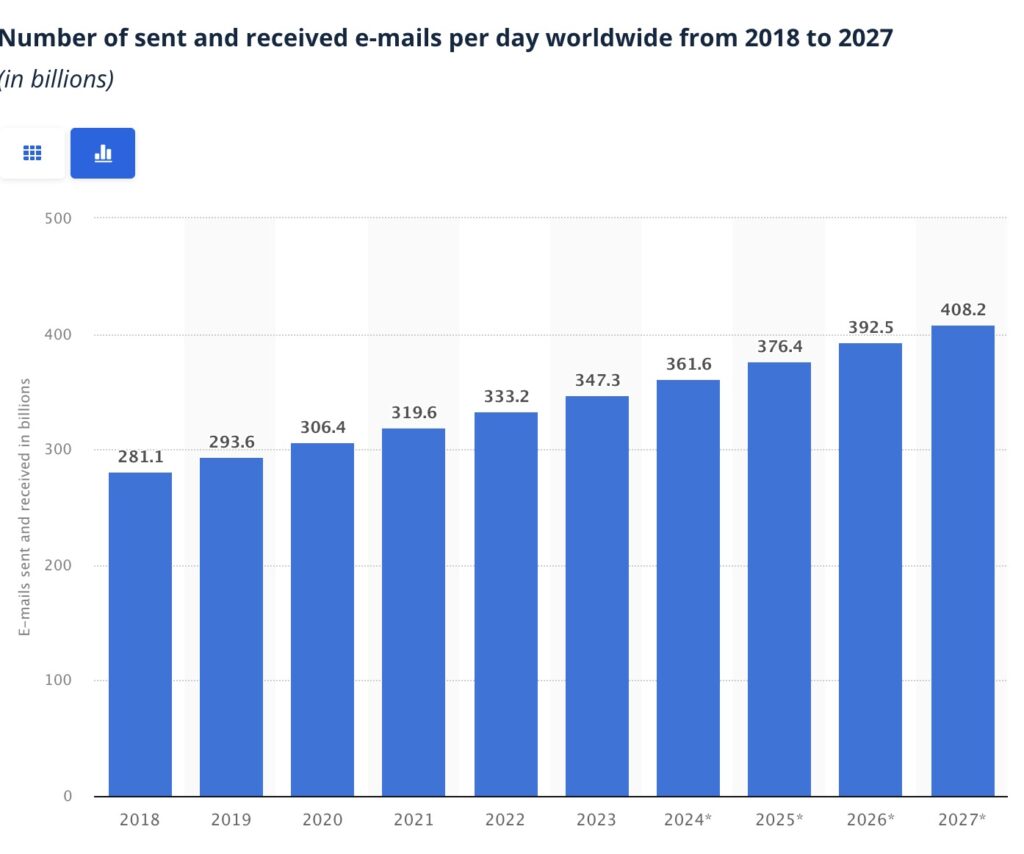
Image via Statista
Considering the vast volume of emails sent and received daily, email management is essential to any organization’s internal and external communication strategy.
Email management enables a company to maximize efficiency and reduce the impact of emails being under-prioritized, replied to late, or forgotten.
According to a Microsoft survey, employees spend 57% of their time on communication, of which 15% is on email alone.
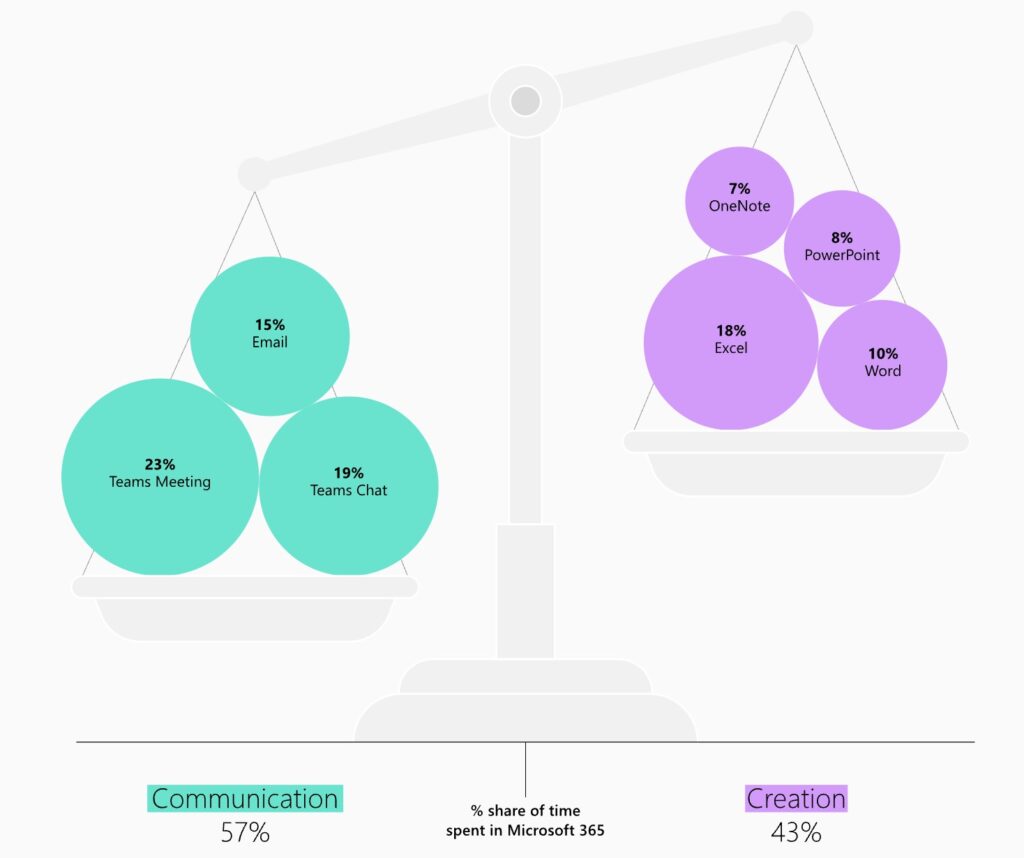
Image via Microsoft
Thankfully, email management tools help organizations effectively manage email for remote work and traditional business operations. Organizations that use email management software add a new level of certainty and transparency. No more guessing. No more winging it and hoping for the best.
Email management helps employees mindfully utilize the time they spend on emails. It helps them prioritize and visualize which emails must be responded to and when. This helps them stay focused and improve first-contact resolution rates and response times.
Also Read:
Though there are many benefits of email management, here are the three most important ones.
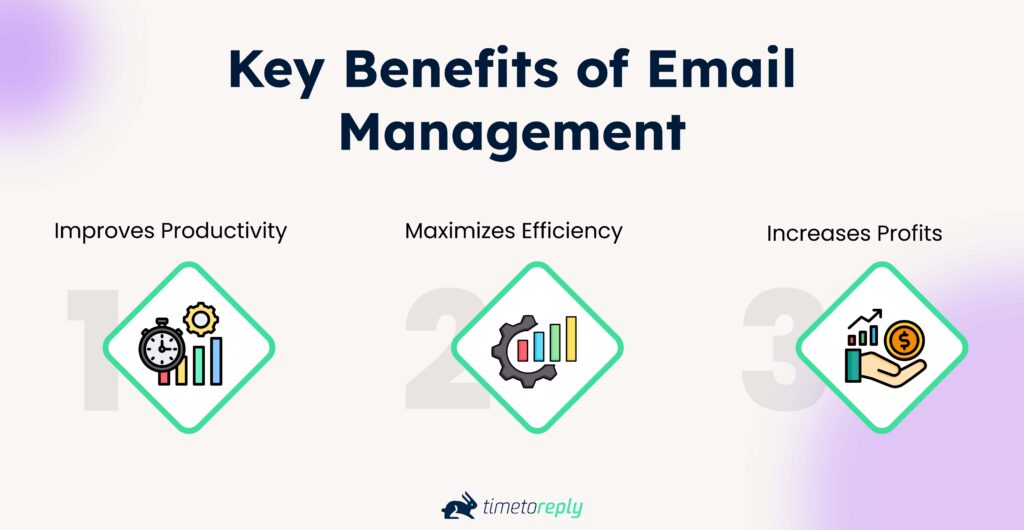
Employees can focus on important tasks instead of emails with proper email management. Email management allows better organization of important information, so employees do not waste precious time scrolling through an overflowing inbox.
Overall, it maximizes email productivity and helps employees manage their time better.
Not every email received deserves the same priority and speed. Email management helps employees prioritize emails. When employees know which emails to respond to, they can more efficiently resolve customer queries quickly and inbound sales leads.
With increased time efficiency and improved productivity, your organization can boost profits. When you have a well-run customer service team that efficiently responds to customers, sales leads and internal comms, you can rest assured that no cent is wasted on cluttered inboxes.
Also Read:
If you don’t follow email management best practices, you will be overloaded with emails, which could lead to mistakes. That’s why we’ve curated a list of some email management best practices that you can follow to ease your email overload.
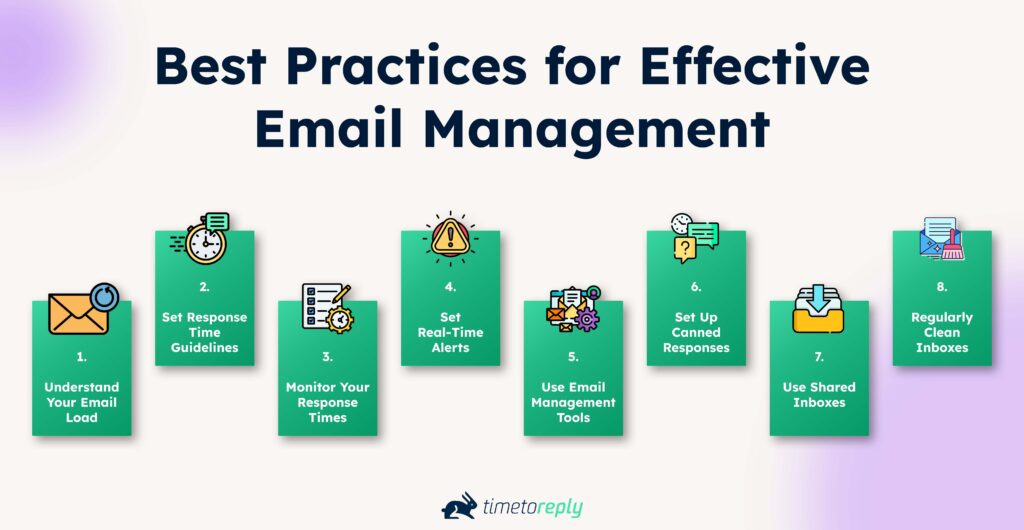
Do you know how many emails your employees are receiving and sending? Do you know how much time individuals are spending on emails?
According to a 2025 ZeroBounce Email Statistics Report, 42% of people check their emails three to five times a day. Using email management software, you can conduct a diagnostic check to reveal the average time each employee spends in their inboxes. Effective email management can redirect these hours towards more valuable tasks.
How responsive do you expect your employees to be? How responsive do customers expect them to be? Your team must understand what response time they are aiming for.
Setting clear response time guidelines can greatly improve your company’s email management. At Timetoreply, we help businesses like yours speed up response times and boost customer satisfaction. Here’s how you can do it.
Start by categorizing your emails. For example, you might label them as “urgent,” “important,” or “routine.” For urgent client inquiries, you could set a response target of under one hour. For routine questions, a 24-hour guideline might work best.
Once you’ve defined your categories, assign a specific response time to each. For instance, if you set a 4-hour window for all inquiries marked as urgent, your team knows exactly what to aim for. This helps everyone stay on the same page and ensures customers get the help they need when they need it.
Make sure all team members know about these guidelines. Share them during team meetings and put them in an easily accessible document. Clear communication prevents misunderstandings and keeps everyone accountable.
Managers and team leaders should follow the guidelines themselves. When your leadership shows that quick responses are a priority, the rest of the team will follow suit. It builds trust and sets a strong company culture centered on reliability and excellent customer service.
Monitoring your email response times is key to spotting areas for improvement and ensuring your team meets its goals. Tracking these metrics can drive positive changes in your business. Here’s how to effectively monitor your email response times.
Installing email management software, such as timetoreply, empowers you to measure and enhance your employee productivity on email response times and performance according to your predefined benchmarks. This way, you are alerted to team members needing more email management support.
Also Read:
It is easy for employees to get distracted and not respond within the stipulated time frame or, worse yet, miss an important email entirely.
With timetoreply, you set automated alerts to keep employees updated on emails not receiving responses. These real-time alerts offer live tracking of your team’s email response time. This kind of alert system prevents emails from being lost or forgotten.
You cannot expect complete visibility over every inbox in your organization. Many excellent email management software solutions can help you do this efficiently and effectively.
Email management software helps you and your team organize your email inboxes. With email management, you can keep on top of incoming messages from your team, customers, and other stakeholders. Email management software adds a layer of functionality not readily available in your default inbox.
Depending on the software you choose, whether software solutions with cloud-based email management benefits or downloadable software, you’ll find features that help with different areas.
Here are some things that email management tools can help you with.
Read more about the best email management software solutions.
Setting up canned responses for common questions can save your team time while ensuring consistent, professional communication. Here’s how to make them work for your business.
Use our ready-to-use customer service email response templates to get started.
Shared inboxes are generally those accessible to a specific team within a company.
For example, all emails received by sales@company.com can be accessed by all sales team members in the company.
Shared inboxes let multiple team members work on the same email account. This means colleagues can easily assign, comment on, and track emails. It prevents duplicate responses, reduces response times, and makes teamwork seamless.
Follow these best practices for shared mailbox management to get the best results.
Check out timetoreply’s shared mailboxes feature to see how it can help you with effective email management.
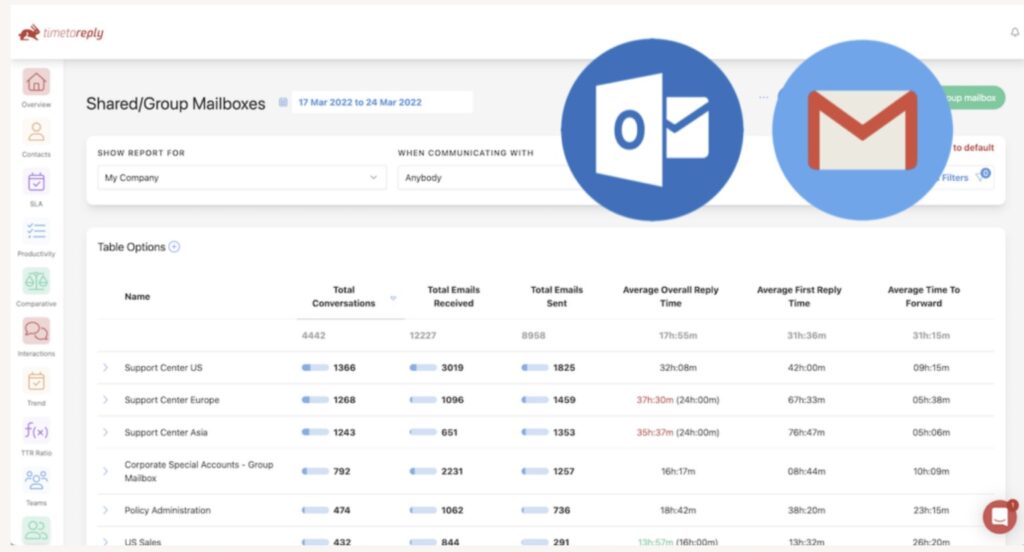
Image via timetoreply
One of the most important email management best practices is to regularly review and clean your email inboxes. This helps reduce clutter and keep things organized.
Here are some best practices you should follow.
Also Read:
timetoreply is the ultimate solution for your email management needs. Here are some things it can help you with:
If you can measure each email’s response time, you can optimize it profitably!
You can integrate timetoreply with Gmail or Outlook to track the response time of each email, determine periods between email exchanges and reduce the time gap. You can share peer-to-peer feedback with your team based on these insights to help them improve their response times.
With timetoreply, there are features for group or shared inbox monitoring and reporting as well as individual team members. This functionality allows you to measure each agent’s reply time performance, email volumes, number of closed queries, and the average time to close a query.
You can also see how each of these agents performs in the context of a group mailbox. This lets you know who’s doing the lion’s share of the work, allowing you to distribute work smartly.
Accessing the data you need to make effective changes can be challenging, especially when you need quick daily insights. However, using timetoreply with email clients like Outlook gives you rapid access to detailed email performance reports.
The best part is that you can customize the settings to decide how frequently you want to receive these reports. You can choose between receiving detailed analytics daily, weekly, or monthly. With these data-driven insights, managers can more effectively manage individuals within their teams, encouraging them to become masters of email management.
The easy availability of performance reports helps separate and identify the valuable emails worthy of attention.
In addition to its email analytics software for teams, timetoreply is enabled with a real-time alert system that informs teams and individuals about emails requiring attention. These real-time alerts offer live tracking of the responsiveness of emails and team communication.
Once you have set a time to reply benchmark, you can help individuals reach these targets by enabling this feature. This way, employees are empowered to reach the time to reply target set, ensuring no email is accidentally lost to flounder in a busy inbox.
With timetoreply’s reports, you analyze and share comparative leadership reports with your teams. These reports help you identify the most diligent workers and reward them for consistently reaching their email management benchmarks. By monitoring email performance metrics with timetoreply extension, individuals are encouraged to rise to the challenge, and the organization promotes a culture of effective communication.
Here’s a look at the kind of performance stats you can get.
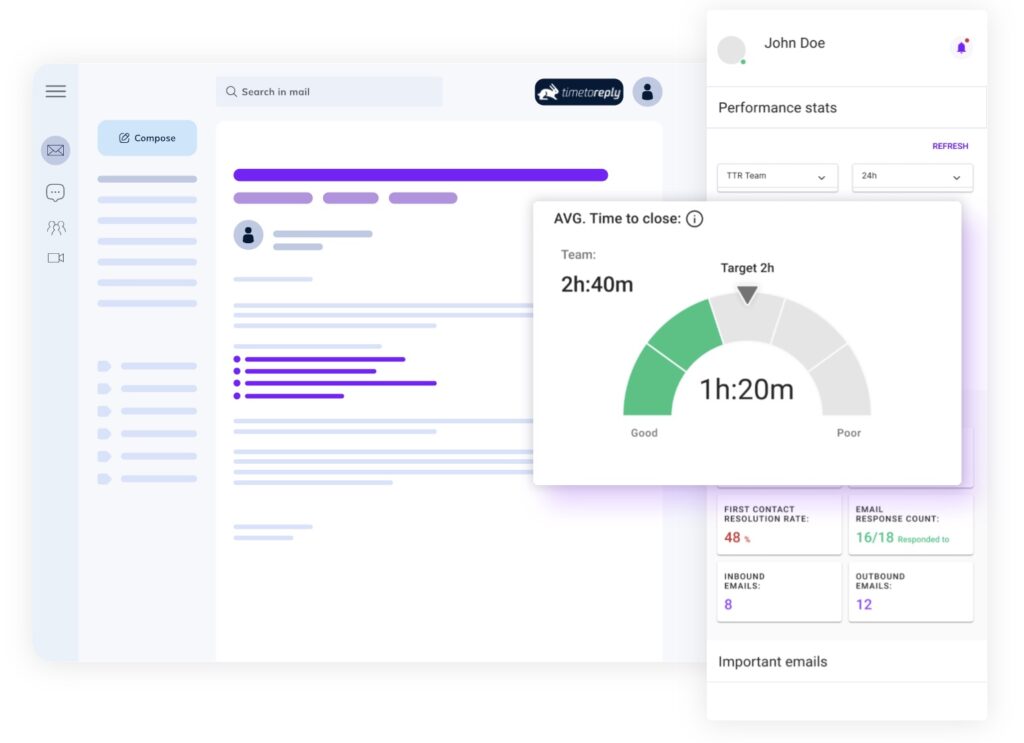
Image via timetoreply
Also Read:
1. What is email management?
Email management is the process of organizing, prioritizing, and handling emails to improve productivity and communication. It involves using tools and techniques to filter, sort, and respond to emails effectively.
2. Why is email management important for businesses?
Proper email management supports better communication and internal coordination for businesses ensuring that important messages are prioritized.
For teams, organized email systems help in collaboration, project tracking, and record keeping. Moreover, businesses can reduce the risk of security breaches by managing sensitive personal email information efficiently.
3. What are some email management best practices?
Some best practices you can follow include:
4. What are some tools for email management?
Various tools can aid in email management, including:
5. How do I reduce the number of emails I receive?
Here are some strategies that you can use to reduce email overload and maintain an organized inbox:
Also Read:
Effective email management is the cornerstone of any successful business. As remote and hybrid work environments continue to grow in popularity, digital communication is more critical than ever.
Every business needs effective communication systems and tools to support its operations and functionality. If your business handles large volumes of emails from customers and sales leads, your priority should be implementing the most advanced and versatile email management software. An email management tool like timetoreply helps harness the power of email to produce efficiency and productivity gains that boost profits.
With timetoreply you can enjoy features that:
Timetoreply is trusted by high-performing inbound sales teams and customer-facing teams globally.
Book a demo to get started with timetoreply.
Get live inbox alerts and reply quickly to customer emails with timetoreply